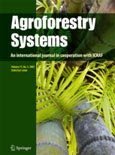Trees play a vital role in combating climate change by sequestering carbon and helping farmers adapt to and become more resilient to future climatic changes. Understanding the factors influencing households’ tree-planting decisions is essential for shaping policies and initiatives aimed at increasing on-farm tree cover, improving farmers’ incomes, and achieving national climate and land restoration goals. This study explores the determinants of farmers’ tree-growing decisions in Kiambu County, Kenya. Data was collected through interviews with 120 households and analyzed using descriptive statistics, Probit, and double-hurdle models to assess the factors driving tree planting and diversification aspirations. Results reveal that 97% of farmers grow trees for their products, while 26% do so for ecosystem services. A majority (93%) are aware of climate change, with 66% and 71% willing to plant more trees for climate mitigation and adaptation, respectively. Probit analysis shows that factors such as land ownership, dependency ratio, labor availability, number of farms, and the belief in trees' importance to households significantly (p ≤ 0.05) encourage tree planting. Furthermore, education, availability of land for tree planting, and food security influence the decision to diversify tree species. Perceived benefits, livestock ownership, and access to piped water positively affect future tree-planting efforts. However, a one-level increase in food insecurity reduces tree species diversification by 0.88. Farmers are primarily motivated to plant trees that provide direct product benefits. Therefore, strengthening education, land ownership policies, and food security measures is crucial for promoting sustainable tree-growing initiatives.
DOI:
https://doi.org/10.1007/s10457-024-01106-3
Score Altmetric:
Dimensions Nombre de citations:



















